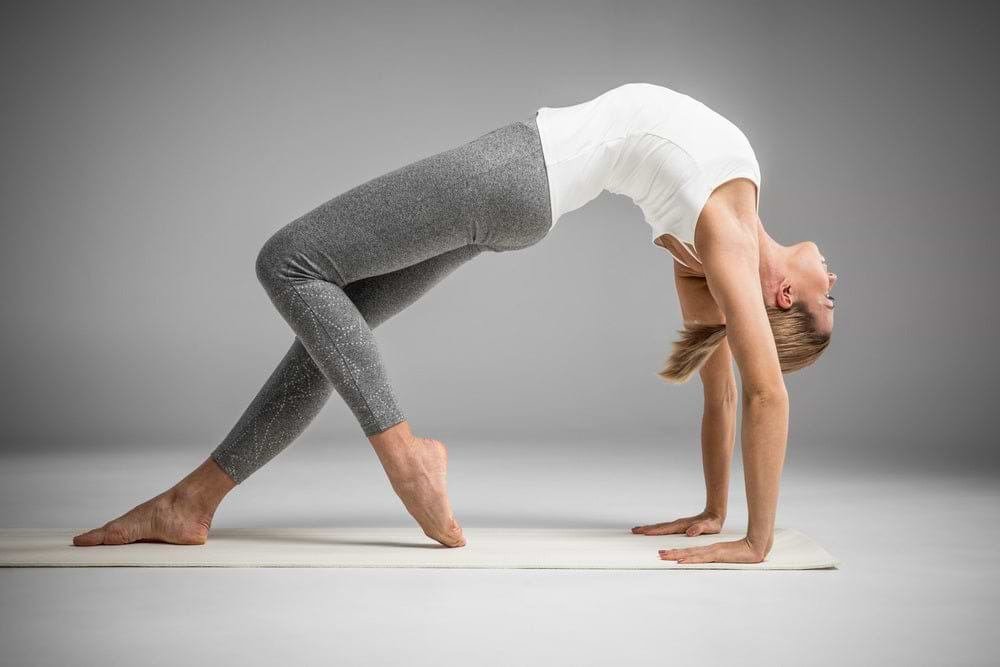
Most Effective Exercises For Sleep Apnea and To Stop Snoring
|
|
Time to read 8 min

|
|
Time to read 8 min
One of the symptoms of sleep apnea is snoring, which can be pretty disturbing for you or your sleeping partner. To avoid such issues, it is typical to want to snore less. But how do you avoid using scientifically-backed methods?
Research has shown that people with sleep issues are more likely to get better after a series of mouth and throat activities that tone the muscles along the airway. The same exercises have been shown to improve symptoms of obstructive sleep apnea. So, what are these efforts? We’ll review the best exercises to help relieve sleep apnea and experience less snoring during sleep.
Sleep apnea symptoms such as snoring occur due to constricted airways and make it difficult for one to breathe properly during sleep. Throat and mouth exercises can help ease the tongue muscles and clear the airway allowing breathing through the nose.
These exercises tone up the tongue and throat muscles so that they are not flappy or relaxed when someone is asleep. These exercises are technically known as “oropharyngeal exercises”; or “myofunctional therapy.” A recent study has shown these exercises to be quite effective in reducing sleep apnea and snoring.
Another study also found that regular cardiovascular exercise reduced the risk of mild symptoms of OSA and ultimately led to a better quality of life. But beyond mouth and throat exercises, yoga can also teach you how to breathe from the diaphragm, which may significantly reduce the risk of having OSA.
Mouth and throat exercises can strengthen airway muscles and reduce snoring over time—but results take consistency and patience. For a more immediate solution, many people turn to the VitalSleep Anti-Snoring Mouthpiece , an FDA-cleared device that gently repositions the jaw to keep your airway open while you sleep.
Sleep apnea exercises need to be done regularly to ensure the best results, and it is almost as frequent as using the sleep apnea machine every night. However, you need to consult your doctor before starting any sleep apnea exercises so that they can advise on the ideal exercises for your throat muscles.
Simple cardiovascular and stretching routines can improve your snoring and sleep apnea symptoms. Walking for about 30 to 40 minutes several times a week for about 12 weeks can significantly affect your sleep apnea symptoms.
To start on this schedule, look for the best time to try this exercise routine: after work, early in the morning, or during your lunch break. Add in rest days to ensure your mouth muscles have enough time to tone up and recover.
More physical activity is proven to help sleep apnea and is a great place to start your treatment journey.
Yoga is becoming common in Western cultures, and yoga exercise involves a flow of different yoga positions, known as asanas. In particular, asanas that deal with pranayama help control breathing during this yoga practice. It has been scientifically proven that these yoga exercises have the potential to reduce mild to severe symptoms of sleep apnea.
One study found a significant improvement in daytime sleepiness, sleep quality, and a reduced neck circumference.
Oropharyngeal refers to parts around the throat at the back of your mouth (tonsils, back of your tongue, adenoids, soft palate, and the palatine uvula (the ball that hangs at the back of your tongue)). Oropharyngeal exercises help strengthen the muscles in and around the throat.
Also known as myofunctional therapy, these oral exercises reduce muscle weakness in the upper throat, tongue, and other vital areas that may cause a person to have obstructive sleep apnea. Plus, the therapy is essential for treating discomforts beyond OSA and mild snoring, helping those who suffer from neck pain, poor digestion, and frequent headaches.
Several types of exercises can help the oropharyngeal part through specific training techniques. These techniques can be grouped as per the area they support the most and can be performed twice a day for improved results.
Tongue slide. Place the tip of your mouth close to the front teeth and gently pull the tongue back along the roof of your mouth. Repeat this exercise 5-10 times, strengthening your throat and tongue muscles.
Tongue push up. Stick your tongue to the upper part of your mouth and press against it. Stay in this position for about 10 seconds and repeat the process 5 times. This exercise will improve your soft palate and tongue strength.
Tongue stretch. Put your tongue out as fast as you can and try to touch the chin as you look up to the ceiling. Stay in this position for 10- 15 seconds, increasing the duration slowly. Repeat 5 times.
Tongue push down. Place the tip of your tongue against the lower front teeth and push back gently along the floor of your mouth. Do this 5 times for about 10 seconds. The exercise helps improve the palate and tongue’s tone and strength.
Face exercises deal with the face muscles to help improve sleep apnea symptoms such as snoring. These exercises can be done a couple of times a day.
Cheek hook. Use a hooked finger to pull your left cheek outward, and then use the facial muscles to pull your cheek inwards and backward. Do this 1o times on each side of the cheek. The exercise helps in the closure of the mouth when breathing.
Tightly press your lips against each other while closing your mouth. Then open your mouth and relax your lips and jaws. Repeat this 10 times as it improves the strength and tone of jaws and facial and throat muscles.
The vowel sounds are an excellent method of mouth exercise as they involve many muscles in the throat. Deliberately say the vowels, a-e-i-o-u, out loud. Start by saying it in a soft tone and adjust how you say it after every 10 or 20 times before changing to a different sound. You can also combine the vowels and repeat as well.
Another excellent exercise for snoring is to practice breathing through your nose. Relax your mouth and jaws and try to inhale through your nose. Breathe slowly through the nose and do this for about one minute, alternating the process between nostrils. You may even experience one nostril being more congested than the other and focus on the more congested nostril. Breathing exercises improve nasal breathing and stabilize the airway as you sleep.
Yes, singing is an excellent exercise for snoring as it activates several muscles in the throat and mouth. Singing involves producing diverse sounds, vowels, and tones, which may help cut down snoring. When singing, try to pronounce individual words rather than along with the normal lyrics.
Strengthening the throat is a colossal way of improving snoring as you need thinner throat muscles for a clear airway. This exercise is simple. Try to open your mouth wide, mimic the facial expression, and roar like a tiger. Open your mouth as wide as possible and move your tongue past your lips. Repeat this method at least five times.
Have you ever come across a didgeridoo? It is a large wind instrument created centuries ago by the indigenous people of present-day Australia. The device is still used today, so you can easily find it in your music store. Playing the didgeridoo can help you strengthen the muscles in the top part of the airways due to the exhaling and puffing of cheeks.
While exercises can make you feel better, coupling with other treatments fast-tracks your way to recovery. Let’s look at some of these OSA treatments.
This sleep apnea treatment focuses on helping people sleep on their side and the optimal position for those with sleep apnea. Studies show that this position is influential, primarily when the symptoms of OSA are caused by the position you sleep in.
A continuous positive airway pressure (CPAP) machine is the most common form of treatment for Obstructive Sleep Apnea. These devices are used to align your throat muscles by opening the airway for easier breathing while asleep.
A few studies show smoking causes inflammation of the muscles in the mouth, a reason why smokers have more risk of snoring. Though the effects can be seen after so many years, people who quit smoking have experienced reduced sleep apnea symptoms.
Alcohol can cause the palate muscles to relax, encouraging snoring. You may need to cut down on alcohol if you already have sleep apnea symptoms.
Extra fat in the neck and throat can cause your airways to collapse, leading to sleep apnea or snoring. Some studies show that overweight people with sleep apnea experienced fewer symptoms after cutting down a few pounds.
A mattress could not cause snoring, but it could be a great solution to sleep apnea. We already talked about how side sleeping helps reduce snoring, and an uncomfortable bed will make it tricky to sleep that way. Consider purchasing a high-quality, memory-foam mattress that could make it easier to adjust your sleeping position and sleep better at night.
In some cases, doctors may recommend surgery as a treatment option. However, surgery is only used as the last option since it is an invasive method and may cause complications. Surgery is a delicate process but is also considered the surest way to cure sleep apnea symptoms. Surgery involves the removal of the muscles that block the airways, jaw realignment, and other techniques.
Some instances of snoring can be an indicator of obstructive sleep apnea, a common sleep disorder. If left untreated, sleep apnea has vital health consequences, so it is important to see a doctor whenever you experience:
Snoring that resembles choking or gasping
High blood pressure
Morning headache
Daytime sleepiness
Mood changes reduce attention span
Obesity or rapid weight gain
For people who suffer from sleep apnea, regular exercise can be beneficial to losing snoring problems. Exercise removes the day’s stress allowing you to sleep better and wake up feeling energetic. Since the muscles are toned up, particularly during mouth exercises, it improves the airway and reduces sleep apnea symptoms.
The Academy of Orofacial Myofunctional Therapy suggests that you do oral and physical exercise daily until you notice some improvements. However, just like any other body exercise, setting aside rest days allows your muscle to recover. Snoring exercises should last for 6 to 12 months for the best results.
Sleeping on the side is the most advantageous position to help reduce sleep apnea symptoms, and doctors recommend it because it encourages blood floor and reduces snoring during sleep. More studies show that people sleeping on their left cheek are less likely to experience sleep apnea.
It has to be a tongue push-up. Place your entire tongue on the top part of your mouth and hold the position for 10 seconds. Repeat this exercise 5 times. Then, place your whole tongue on the floor of your mouth and hold the position for 10 seconds. Repeat the exercise 5 times.

